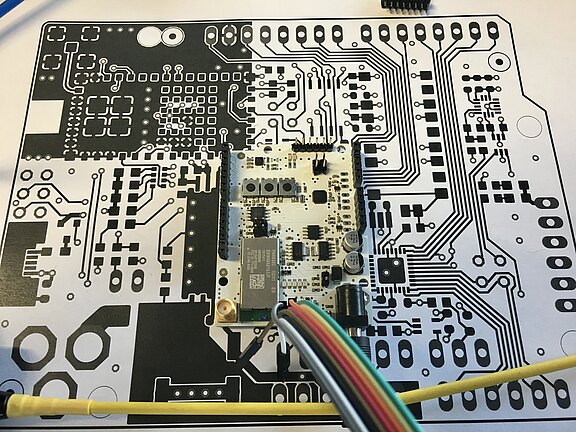The idea to combine energy transmission with network technology has existed for a considerable time. 20 years ago this led to the development of the so called Power over Ethernet (PoE).
The PoE expands upon the usual Ethernet setup by including the ability to conduct electricity. This means that network capable devices can employ it to power themselves too. The IEEE 802.3 Norm defines the different performance classifications and their execution.
In the RFID the RFID-Responder exists in an electromagnetic alternating field. The chips dont only receive the necessary data across this, but also the required power.
What makes this idea new and frankly revolutionary is to let this power transmission occure through the Internet Protocol (IP). If one where to conduct the energy transmission across the transport layer (Layer 4) of the ISO/OSI-reference model over IP, energy can be forwarded independent of the transmission medium. This opens up this invention to totally new fields. For example being able to transmit the functions across WiFi.
A particular challenge of this revolutionary concept is the different nature of the transmission of data and energy in this form. When transmitting data a certain level of transmission power is required. As a result the relationship between data and transmission is fundamentally given. The required power supply is continuously transmitted across AC or DC. The IP always transmits data in packages however. The corresponding power news to be packaged into such addressed packages during transfer.
During the first tests we were able to conduct the test transmissions in simplex or half duplex modes. This should suffice for most application opportunities. For the negotiation of performance data the Power Control Protocol (PCP) was developed, based on the ICMP.
The current tests can only transfer a limited performance as of yet. However, should this innovation mature it is possible that the protocol may be used to charge vehicles in the future. Using the ISO 14118 charging communication, which is already supervised via the internet, transmitting energy across the communication is the next logical step.
